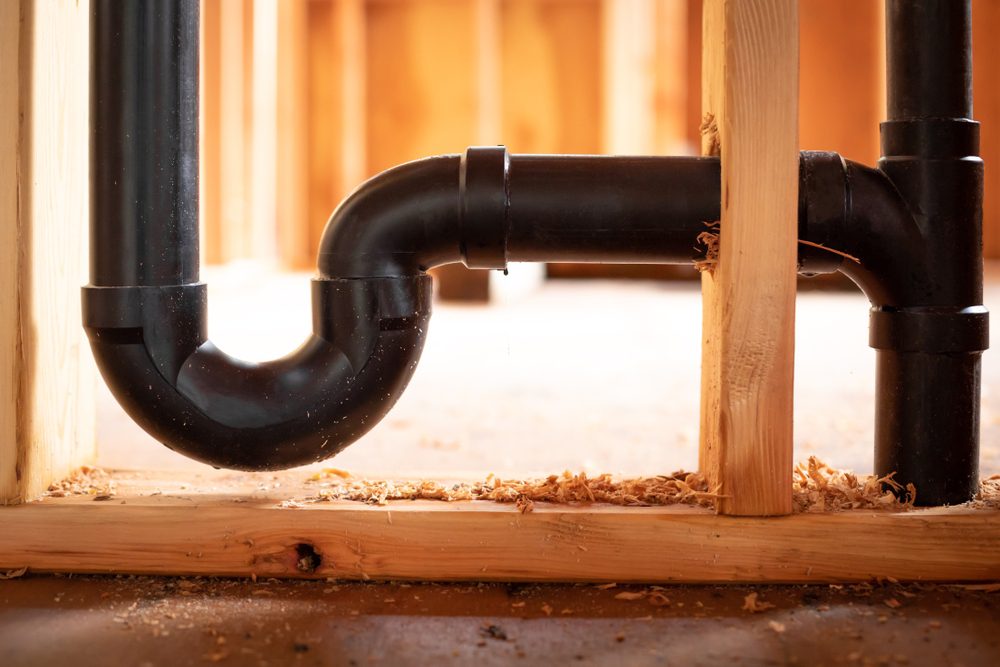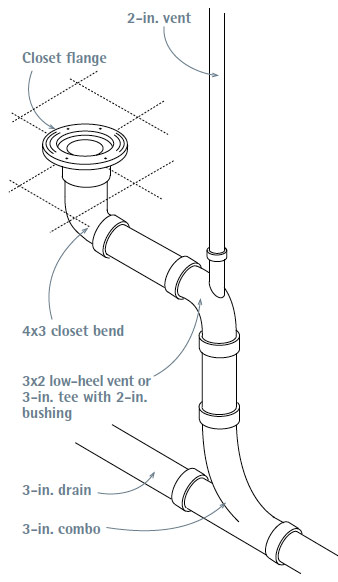The Necessity of Proper Ventilation in Home Plumbing Systems
The Necessity of Proper Ventilation in Home Plumbing Systems
Blog Article
We've discovered this great article involving What Is a Plumbing Vent and Why Is It Important down the page on the internet and believe it made perfect sense to share it with you here.

Proper ventilation in pipes systems is typically forgotten, yet it is crucial for preserving the functionality and safety of your home's plumbing. Air flow helps manage atmospheric pressure, prevent the buildup of dangerous gases, and make certain the reliable elimination of waste. In this guide, we will certainly explore the value of appropriate pipes ventilation, exactly how it works, and the advantages it brings to your pipes system.
Understanding Air Flow in Plumbing
Ventilation in pipes describes the network of pipes that allow air to move via the drain system. These vents serve numerous purposes, consisting of controling air pressure within the pipes, stopping sewer gases from going into the home, and assisting in the smooth circulation of wastewater.
Just How Air Flow Works in Plumbing Equipments
Air Pressure Regulation
Proper ventilation maintains well balanced atmospheric pressure within the pipes system. When water streams via pipes, it displaces air. Without adequate air flow, this variation can produce unfavorable pressure, resulting in reduce drains or siphoning of water from catches, which can cause undesirable smells to leak into the home.
Avoiding Sewage System Gas Buildup
One of the most vital features of pipes vents is to avoid drain gases, such as methane and hydrogen sulfide, from building up within the home. These gases can position serious wellness threats and are extremely flammable. Vent pipelines enable these gases to get away safely outdoors.
Helping in Waste Removal
Air flow aids in the efficient elimination of wastewater by preventing airlocks in the drainage system. When air can flow freely with the vents, it enables water and waste to stream smoothly through the pipes, minimizing the threat of obstructions and backups.
Sorts Of Plumbing Vents
Key Heap Vent
The major pile air vent, also referred to as the vent pile, is the key vent in a pipes system. It prolongs from the primary drainpipe line up via the roof covering, permitting gases to get away and fresh air to enter the system.
Branch Vent
Branch vents attach to the main pile air vent and serve specific fixtures, such as sinks, commodes, and showers. These vents guarantee that each component has appropriate air flow to work effectively.
Air Admittance Shutoff (AAV).
An Air Admittance Valve (AAV) is a one-way shutoff that permits air to get in the plumbing system without the need for a conventional air vent pipeline prolonging with the roofing system. AAVs are frequently made use of in improvements or areas where installing a basic air vent is impractical.
Indicators of Poor Ventilation in Plumbing.
Slow Draining Fixtures.
If your sinks, bathtubs, or toilets are draining gradually, maybe an indicator of bad ventilation. Inadequate air flow can produce a vacuum cleaner effect, making it challenging for water to drain pipes effectively.
Gurgling Seems.
Gurgling sounds coming from drains pipes are typically an outcome of air being drawn through water catches due to negative stress in the pipelines. This is a clear indication of not enough ventilation.
Undesirable Odors.
Sewer odors inside your home are a warning that your plumbing system is not appropriately ventilated. This might indicate that drain gases are not being appropriately aired vent outside, causing potentially unsafe conditions.
Common Air Flow Mistakes.
Insufficient Vent Sizing.
Utilizing small air vent pipelines can cause bad air circulation and pressure discrepancies in the system. It's vital to make use of vents that fulfill the specific demands of your plumbing system.
Improper Vent Placement.
Placing vents also far from the fixtures they offer can reduce their efficiency. Correct placement makes certain that air can stream openly and effectively with the system.
Ignoring Code Demands.
Building codes give certain standards for pipes air flow. Disregarding these codes can cause a system that stops working to operate correctly and might bring about costly repair services or carcinogen.
Benefits of Correct Ventilation.
Enhanced System Performance.
Appropriately aerated plumbing systems operate much more effectively, with less clogs, faster draining, and much less strain on the pipes. This performance extends the lifespan of the pipes system.
Improved Air Quality.
By preventing sewer gases from entering your home, correct ventilation adds to far better indoor air high quality, making your living atmosphere healthier and more comfortable.
Protecting Against Water Damages.
Adequate air flow assists protect against water from being siphoned out of catches, which can cause sewer gases going into the home and triggering water damage over time.
Steps to Ensure Correct Ventilation.
Consulting Pipes Codes.
Always consult regional pipes codes when developing or changing your plumbing system. These codes provide the needed guidelines for appropriate airing vent and guarantee your system meets safety requirements.
Normal Inspection and Maintenance.
Routine examinations can assist recognize possible air flow concerns before they come to be significant issues. Upkeep jobs, such as cleaning up air vent pipelines and checking for obstructions, are essential for keeping the system in good working order.
Professional Installment.
For brand-new installments or significant alterations, it's smart to employ a professional plumbing technician. They have the experience to make certain the ventilation system is correctly made and installed according to code.
Conclusion.
Appropriate ventilation is an essential element of any plumbing system, making certain that it functions successfully and safely. By comprehending the importance of ventilation, identifying the signs of bad air flow, and taking steps to keep your system, you can protect against expensive issues and secure your home's air top quality.
4 Things You Should Know About Your Plumbing Vents
What Plumbing Vents Are
Also called a vent stack, a plumbing vent is a vertical pipe attached to your drain line that runs through your roof. The plumbing vent pipe, or plumbing air vent, removes gas and odors from your plumbing system and allows fresh air to enter the pipes, helping the water to flow out of the drain pipes.
What Plumbing Vents Do
Plumbing vents have two basic functions. One of which is to allow unpleasant smelling wastewater and sewer gasses to escape your plumbing system instead of entering your home. Plumbing vent pipes are typically located on roofs, away from windows, to ensure the fumes exit the home completely.
The other function of the plumbing vent is to move fresh air into your plumbing system. This helps move water through every plumbing fixture in your house, like toilets and sink drains. Think of the way in which you need to let a little air into the bottle as you pour soda in order to make the drink flow smoothly.
Different Types of Plumbing Vents
True vent: This is the most common vent option. In simplest terms, a true vent is a vertical pipe attached to your drain line that exits through the roof. They often function as the main vent that other fixtures can connect to. Re-vent pipe or auxiliary vent: Attached to the drain line near specific plumbing fixtures, re-vent pipes run up and over to connect to the main vent. Common vent: Two plumbing fixtures installed on opposite sides of a wall are typically tied into the vent stack using something known as a sanitary cross. Wet vent: This venting option operates as a drain pipe and a vent at the same time. Wet vent drainage systems drain water from one fixture while venting the air from another. Although they’ve been used for over 100 years, wet vent systems have only recently been added to the plumbing code in many areas. If you’re planning on installing one in a bathroom remodel, make sure you check your local code prior to construction. Loop vent: For free-standing fixtures like kitchen island sinks, loop vents are ideal. These vent pipes run under the floor, rise from the P-trap, and create a loop inside the cabinet sink. Air admittance valve: An AAV is a one-way mechanical valve typically installed at the site of the plumbing fixture. AAVs allow venting to occur without having to tie into a larger venting system. They’re ideal for venting fixtures where you aren’t able to easily connect to an existing vent system. Common Plumbing Vent Issues
Although vent pipes typically don’t have water flowing through them, they’re still subject to many typical plumbing issues. For example, clogs are one of the most common problems associated with sewer vent pipes. If your vent pipe gets clogged, all of your plumbing fixtures tied into the vent stack will be affected.
A sink with a slow drain that bubbles and gurgles or a strong sewage smell around your toilet are both indicators that your toilet vent pipe is clogged. Because most vent pipes exit through the roof, old leaves, twigs or even a bird’s nest could be clogging the pipe.
Clogs in your vent pipe system cause a buildup of negative pressure, meaning that water won’t be able to flow out of your home very well. It’s similar to putting your finger over the opening of a straw to trap water inside. When you remove your finger, the water is able to flow out of the straw.
If you suspect you have any blockage in your vent, make sure you have a professional come examine the situation. Left unchecked, a blocked air vent can lead to other costly repairs, like leaks and sediment buildup.
Under Pressure
Pipe vents are essential aspects of a home’s plumbing system. Owning a home means learning about all sorts of things you never put much thought into before. But by understanding as much as you can about the important systems of your home, you can keep those budgets intact and those anxiety levels low.
https://www.homeserve.com/en-us/blog/home-improvement/plumbing-vents/

I recently found that post on What Is A Plumbing Vent & How Do They Work? when scouting around the search engines. Are you aware of another person who is excited about the niche? Why not promote it. Thanks a bunch for your time. Please come visit our blog back soon.
Call Today Report this page